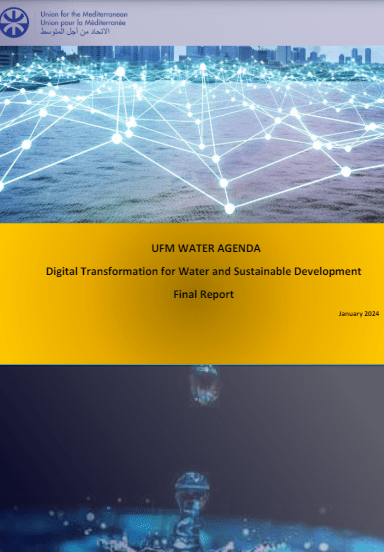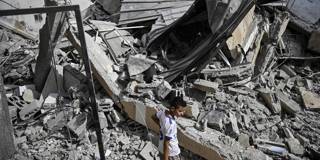Blue Economy Must Benefit Fishing Communities in Global South, Says WorldFish Chief

Dr Essam Yassin Mohammed, Director General of WorldFish.
- The Global South is crucial for ensuring aquatic food security to feed the growing world population. It is imperative that blue economy initiatives benefit fishing communities in developing and small island nations, which are facing disproportionate impacts of climate change, says Dr Essam Yassin Mohammed, Director General of WorldFish, an international non-profit research organization based in Penang, Malaysia.
“More than three billion people depend on aquatic foods as their main source of protein and micronutrients, and nearly 800 million people rely on fishing for their livelihood. The Global South produces a significant portion of the world’s aquatic food and 95 percent of the fishing workforce comes from these regions,” notes Mohammed, who is also CGIAR’s Senior Director of Aquatic Food Systems.
Growing up in Eritrea’s capital, Asmara, situated on a highland plateau 2325 meters above sea level, Mohammed learned the value of food early in life. The country had recently gained independence from Ethiopia in 1991, and young children like him were motivated to contribute to the nation’s food security.
“Eritrea, a coastal country by the Red Sea, had abundant fish and marine resources. We believed these resources would be critical in making the country food secure so some of us decided to study marine biology and fishery science,” he adds.
While working for Eritrea’s Ministry of Fisheries, he was tasked with enhancing fish consumption amongst the Highlanders, who traditionally had no connection with the sea. He then realized that driving behavioral change in people’s diets, while considering cultural food preferences, is far more complex. To meet this challenging task and to better understand the interaction between humans and the ecosystem, he decided to train as a development economist.
“Integrating fisheries science with economics has profoundly shifted my viewpoint and deepened my comprehension of the intricate interplay within socio-ecological systems. This has defined my career, and I have never looked back,” says Mohammed, who is committed to improving fisheries and aquaculture amidst the challenges of climate change, habitat degradation, and aquatic animal diseases.
Shifting ocean currents and warming waters are having a significant impact on fish stocks and coastal infrastructure, inundating lands and altering marine ecosystems, which is affecting the productivity of some fish species and forcing them to migrate to more optimal environments.
He says, “While large-scale commercial fishing vessels can still pursue and catch these fish say 20 km away, it is technically and financially prohibitive for small-scale operators with small boats to do so. This is where climate change becomes a social justice issue, impacting coastal communities’ access to food and causing loss of livelihoods and cultural identity.”
“At WorldFish, we are going beyond helping communities become climate resilient by creating viable livelihood opportunities, which include development of climate-resilient fish strains, adoption of sustainable aquaculture practices and assisting governments strengthen their fisheries policies, for fishing and fish farming-dependent communities to thrive under a changing climate,” he adds.
WorldFish research is helping prevent aquatic animal diseases, which cause an estimated global annual loss of over USD 6 billion, by ensuring that the food being produced is safe for human consumption.
“One of the critical aspects of fish farming is that once fish are exposed to a disease, the entire stock can perish.
We are democratizing fish health diagnosis with Lab in a Backpack initiative. It’s a compact digital tool that enables fish farmers to quickly diagnose the disease, contact service providers for treatment advice, and also learn how to deal with anti-microbial-resistant diseases,” he explains.
The initiative is helping fish farmers build their capacity for the best biosecurity management practices by integrating the One Health approach, which prioritizes the health of fish, the environment, and people.
Besides diseases, plastic pollution in the ocean poses a significant threat to marine life and ecosystems. In November 2024, governments will meet for the final round of UN negotiations for a global treaty to end plastic pollution.
Mohammed says, “Once plastics enter the ocean, they are there to stay indefinitely. We have seen many instances of plastics harming marine life—straws stuck in the nostrils of turtles or dolphins—and now traces of microplastics have been found in fish tissues. It means those microplastics are being ingested by human beings, impacting their health too.”
“We need a legally binding treaty to mitigate plastic pollution. There is a global consensus now, but this needs to be followed by action on minimizing and eliminating plastic use and establishing a robust waste management system,” he adds.
Mohammed warns that many developed countries are prioritizing short-term economic gains at the cost of long-term sustainability and conservation of the global marine ecosystem. “We need to perceive the natural capital—marine life, oceans, and water bodies as economic infrastructure; and reinvest in them to ensure they continue to provide for us in the future,” he asserts.
According to the World Bank, blue economy is the “sustainable use of ocean resources for economic growth, improved livelihoods, and jobs while preserving the health of the ocean ecosystem.”
Currently, investments in blue economy initiatives are not percolating down to developing countries. WorldFish research reveals that from 2017 to 2021, USD 5.9 billion allocated to blue economy initiatives was concentrated mainly in Europe and Central Asia, and 35 percent of examined projects had potential risks for creating or exacerbating social inequities.
“Blue economy investments must benefit developing countries and small island nations. Those who are farthest behind must be able to benefit the most,” Mohammed tells IPS.
The total fisheries and aquaculture production (excluding algae) is expected to reach over 200 million metric tons in 2030, according to the United Nation’s Food and Agriculture Organisation.
“Small-scale operators in the Global South supply up to 50 percent of aquatic food consumed globally. Ensuring that investments in the blue economy benefit these communities is essential for achieving shared prosperity and addressing climate change impacts on food security,” says Mohammed.
IPS UN Bureau Report















